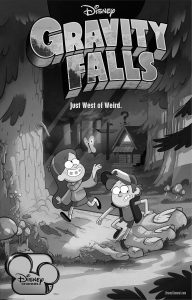OPINION: The final girl fails and flourishes
March 10, 2022
The “final girl” is a trope in horror films which refers to the last girl or woman alive to confront the killer, ostensibly the one left to tell the story.
Film and media wouldn’t be the same without these feminine-presenting characters within them. While most films consist of your average, everyday plot, what’s more satisfying than seeing a woman prevail in the end of harsh times? I mean, who doesn’t love to see the ultimate culmination of female empowerment?
And what film connoisseur doesn’t love a satisfying ending to a tense, almost unimaginable movie? The twists and turns, the plot twists you never see coming. The wondrous and commonly used trope of the “final girl” somehow offers the perfect combination of these achievable and popularized methods, even if many examples occur within everyone’s favorite film genre: horror.
Within horror movies themselves, they’ve made quite the mark within the history of filmography
as portraying feminine-presenting characters as helpless, sexually appealing characters to gawk
at and only view within the male gaze. Within the concept of the “final girl,” even though it’s not a new creation, it presents an alternative response and satisfaction of an
average, makeshift scary movie.
A great example of this is the 2019 film “Ready or Not,” which presents its main heroine, Grace Le Domes, as a strong yet manipulated bride who falls within the clutches of her treacherous in-laws. The film’s last shot of the skillful bride, whose dress is soaked in the blood of those who
wronged her, elicits a satisfying yet chilling response to a traditionally beautiful occasion.
Is the “final girl” trope a revolutionary method of the inclusion of women and feminine-
presenting individuals within film, in front of the camera or behind the scenes? Some argue that the concept is more of a syndrome, a sickness which propels the unnatural ways society portrays women within a sexist society?
Some view the term “final girl” as what it visually represents, which is the surface-level
notion of the empowering concept as simply little girls pretending to be more than what they are,
whether on the small or big screen for all to view.
Even the words of Grace’s potential father-in-law, “Our family is big on tradition, rituals,
and games,” could allude to and integrate with modern society’s views on essentially
infantilizing girls and women on screen without giving them credentials and praise for
performances presented, and by upholding the tradition of “keeping women in their place,” the
audiences’ opinions need not to change.
As a fellow film lover and feminine-presenting person, it can sometimes be difficult to
understand and distinguish which movies are revolutionary for the inclusion of women or were
simply created to quickly fulfill representation or appeal to the historical standard of the male gaze.
What I do understand, however, is that satisfying, oh so comforting feeling of triumph and glee
whenever the heroine gets what she rightfully deserves, and what more could you ask for than that grand finale of femininity?







